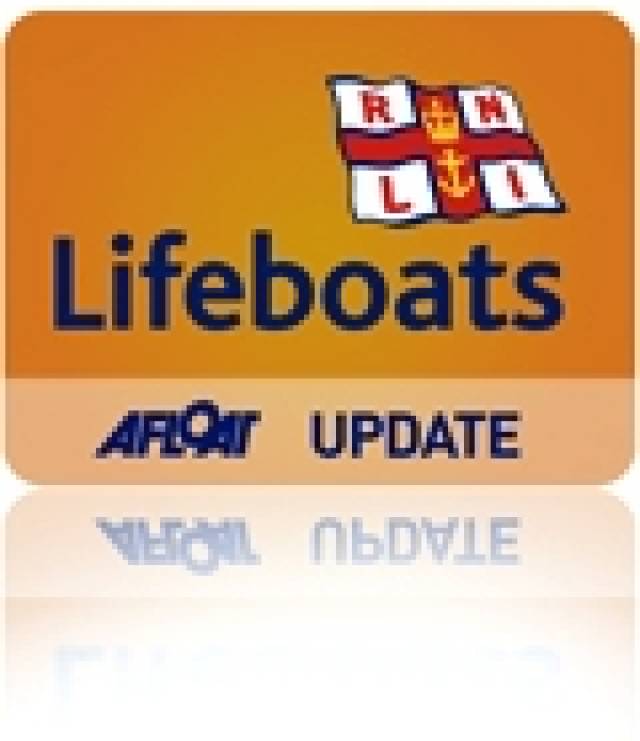#rnli – Volunteer lifeboat crew with Lough Ree RNLI were stood down at this evening (Thursday 20 March 2014) following a major search for a man believed missing when a boat carrying three men set off for Carnagh, from Hodson Bay in Athlone, earlier this afternoon. As Afloat.ie reported earlier, two men, who were on the boat were rescued by the lifeboat crew from the water and have been taken to hospital. Rescue 118 and members of the Athlone Sub Aqua Club, and Lanesborough SubAqua Club were also involved in the search for the third man.
The alarm was raised by a local man this afternoon when he witnessed the group setting off for Carnagh in a 15–foot boat. Conditions on the Lough were described as gusty with a force five to six wind. Lough Ree RNLI inshore lifeboat was launched and came upon a man in the water at 4pm. They recovered the semi-conscious casualty onto the lifeboat and transported him to Hodson Bay where he was handed over to a waiting ambulance.
The lifeboat crew immediately returned to the scene to continue the search and located a second casualty in the water at 5.15pm. He was again transferred by lifeboat back to Hodson Bay and met by ambulance.
The RNLI lifeboat crew along with the Irish Coast Guard helicopter Rescue 118 and members of the Athlone Sub Aqua club and Lanesborough Sub Aqua Club were engaged in a full scale search for a third man until they were stood down due to fading light, and the search is expected to resume at first light tomorrow.
Commenting on the search Lough Ree RNLI Lifeboat Operations Manager Damien Delaney said, "This was a major search and rescue operation on Lough Ree involving the RNLI, Coast Guard, Athlone Sub Aqua, Lanesborough Sub Aqua, and other local boats. The lifeboat crew were able to rescue two men from the water but a third remains missing.































































